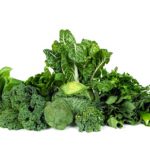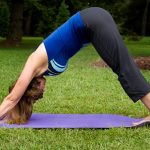 January is National Glaucoma Awareness Month, so we share our articles on glaucoma remedies, risk factors, impact of aerobic exercises and yoga, as well as the risk of glaucoma in obstructive sleep apnea patients.
January is National Glaucoma Awareness Month, so we share our articles on glaucoma remedies, risk factors, impact of aerobic exercises and yoga, as well as the risk of glaucoma in obstructive sleep apnea patients.
Glaucoma, a condition that affects the eyes, can be quite serious and even result in blindness. The older you become, the more prone you are to developing glaucoma. Glaucoma patients typically range between 45 and 64 years of age.
Advertisement
Glaucoma can strike without warning and without symptoms. There is no cure for glaucoma, so it’s important to take the necessary steps to prevent it. This can be done through nutrition and diet, which can deter the onset of this eye condition.
Obstructive sleep apnea sufferers more likely to develop glaucoma
Obstructive sleep apnea and glaucoma are two common health issues, but they are rarely discussed together. That’s likely to change though. Researchers in Taiwan believe those who suffer from obstructive sleep apnea are more likely to develop glaucoma, which is the second leading cause of blindness.
Researchers at Taipei Medical University looked at National Health Insurance medical records for over a thousand patients aged 40 and older who were suffering from obstructive sleep apnea, the chronic condition that blocks breathing during sleep. They compared these people to about 6,000 cohort control patients. The researchers discovered that the risk of developing open-angle glaucoma within five years of sleep apnea diagnosis was 1.67 times higher in sleep apnea patients, compared to the control group. Continue reading…
 Glaucoma and retinal degeneration risk reduced with physical fitness and aerobic exercise
Glaucoma and retinal degeneration risk reduced with physical fitness and aerobic exercise
Glaucoma risk and retinal degeneration progression can be reduced with physical fitness and aerobic exercise. The study findings revealed that exercise may have long-term positive impact on low ocular perfusion pressure (OPP), which is a risk factor for glaucoma.
The researchers examined the relationship between physical activity and OPP among 5,650 men and women. The participants were evaluated on their physical activity levels with detailed self-administered health and lifestyle questionnaires. Intraocular (eye) pressure and blood pressure were also checked. The results showed that physical exercise performed 15 years prior is associated with a 25 percent lower risk of low OPP. Continue reading…
 Glaucoma, cataracts, exfoliation syndrome influenced by outside temperatures, sun exposure, and gender
Glaucoma, cataracts, exfoliation syndrome influenced by outside temperatures, sun exposure, and gender
Exfoliation syndrome, an eye condition causing glaucoma and cataract development, is influenced by outside temperatures and sun exposure, as well as patient’s age and gender. Coauthor Louis Pasquale said, “Although many studies from around the world have reported on the burden of the disease, some aspects of the basic descriptive epidemiologic features, which may help shed light on the cause, are inconsistent. In this study, we found that women are more vulnerable to this disease than men, that ES [exfoliation syndrome] is not a disease of Norwegian descent, and that where you live does matter when it comes to developing the disease. Continue reading…
 Risk of glaucoma reduced by eating green, leafy vegetables
Risk of glaucoma reduced by eating green, leafy vegetables
You may be able to lower your risk of glaucoma by consuming plenty of green, leafy vegetables as found in a new study. The study uncovered consuming green, leafy vegetables may reduce the risk of glaucoma – a vision problem which can result in blindness – by 20 percent.
Advertisement
Study leader Jae Kang said, “We found those consuming the most green leafy vegetables had a 20 to 30 percent lower risk of glaucoma.”
The research team followed 64,000 participants between 1984 and 2012 and an additional 41,000 participants between 1986 and 2012. Participants were all over the age of 40 and did not have glaucoma at the start of the study. Continue reading…
 Yoga positions may impact eye pressure in glaucoma patients
Yoga positions may impact eye pressure in glaucoma patients
Certain yoga positions may impact eye pressure in glaucoma patients, according to new findings. Positions that can increase eye discomfort in glaucoma patients are those where the head is in a downward position.
Glaucoma is the leading cause of irreversible blindness and can impact a patient’s quality of life. When fluid pressure increases in the eye, it leads to damage of the optic nerve. Minimizing fluid pressure can also work to reduce optic nerve damage associated with blindness. Continue reading…
